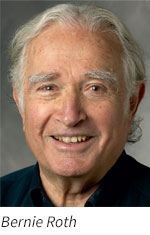Mechanical Engineering
Stanford-led skyscraper-style chip design could boost electronic performance by factor of a thousand
In modern computer systems, processor and memory chips are laid out like single-story structures in a suburb. But suburban layouts waste time and energy. A new skyscraper-like design, based on materials more advanced than silicon, provides the next computing platform.
For decades, engineers have designed computer systems with processors and memory chips laid out like single-story structures in a suburb. Wires connect these chips like streets, carrying digital traffic between the processors that compute data and the memory chips that store it.
But suburban-style layouts create long commutes and regular traffic jams in electronic circuits, wasting time and energy.

Last modified Thu, 10 Dec, 2015 at 15:42
Stanford engineers among recipients of Precourt Institute and TomKat Center $2.1 million grants
Grants will fund groundbreaking energy research
The Precourt Institute for Energy and the TomKat Center for Sustainable Energy at Stanford have awarded 12 faculty seed grants totaling $2.1 million for groundbreaking research on clean energy. Launched in 2010, the seed-grant program funds faculty research with the potential for high impact on energy supply and use.
Last modified Thu, 3 Dec, 2015 at 13:05
Plasma experiments bring astrophysics down to Earth
New laboratory technique allows researchers to replicate on a tiny scale the swirling clouds of ionized gases that power the sun, to further our understanding of fusion energy, solar flares and other cosmic phenomena.
Intense heat, like that found in the sun, can strip gas atoms of their electrons, creating a swirling mass of positively and negatively charged ions known as a plasma.
For several decades, laboratory researchers sought to replicate plasma conditions similar to those found in the sun in order to help them understand the basic physics of ionized matter and, ultimately, harness and control fusion energy on Earth or use it as a means of space propulsion.

Last modified Thu, 3 Dec, 2015 at 9:23
Atom-sized craters make a catalyst much more active
SLAC, Stanford Engineering discovery could speed important chemical reactions, such as making hydrogen fuel
Bombarding and stretching an important industrial catalyst opens up tiny holes on its surface where atoms can attach and react, greatly increasing its activity as a promoter of chemical reactions, according to a study by researchers at Stanford University and the Department of Energy’s SLAC National Accelerator Laboratory.

Last modified Thu, 3 Dec, 2015 at 9:16
Designing Material Interfaces: Programmable Materials and Tactile Displays
CS547 Human-Computer Interaction Seminars (Seminar on People, Computers, and Design)
Fridays 12:30-2:20 pm
Gates Building, Rm B01
Open to the public
Last modified Tue, 3 Nov, 2015 at 8:47
Introducing MARTY, Stanford's self-driving, electric, drifting DeLorean
Stanford engineers built an autonomous DeLorean capable of stable, precise drifting at large angles in order to study how cars perform in extreme situations, which could ultimately guide the development of autonomous safety protocols.
If you're going to build an autonomous, electric, drifting automotive research vehicle, why not do it with some style?
Last modified Wed, 21 Oct, 2015 at 13:27
Tension helps heart cells develop normally in the lab, according to Stanford engineers
Researchers have long been able to prod stem cells into forming heart-like beating clumps in the lab, but those cells don't behave like normal heart cells. Getting them to mimic normal adult cells – a critical step for eventually using them to test drugs – requires tension and a specific shape.
The heart is never quite at rest, and it turns out that even in a lab heart cells need a little of that tension. Without something to pull against, heart cells grown from stem cells in a lab dish fail to develop normally.
In addition to discovering the important role that tension plays in growing heart cells outside of the body, Stanford engineers have found that lab-grown heart cells contract more strongly when grown in long, thin shapes.

Last modified Wed, 30 Sep, 2015 at 8:51
Arun Majumdar named co-director of Stanford's Precourt Institute for Energy
Arun Majumdar, a professor of mechanical engineering at Stanford, will serve as co-director of the university's Precourt Institute for Energy. He will serve with the current director, Sally M. Benson, professor of energy resources engineering.
Arun Majumdar, a professor of mechanical engineering at Stanford, will serve as co-director of the university's Precourt Institute for Energy. He will serve with the current director, Sally M. Benson, professor of energy resources engineering.

Last modified Mon, 28 Sep, 2015 at 9:08
Stanford engineers find secret to steady drone cameras in swan necks
By solving how whooper swans keep their heads steady during flapping flight, Stanford engineers have developed a camera suspension system that could allow drones to produce crisper video images.
Swans and geese are the envy of aeronautical engineers. Even plump geese can perform remarkable aerial acrobatics – twisting their body and flapping their powerful wings while keeping their head completely still.

Last modified Thu, 3 Sep, 2015 at 9:53
Stanford d.school's Bernie Roth recommends a bias toward action
In his new book, Roth says he believes that people can lead more fulfilling lives by actually doing things, instead of merely trying to do things.
 When he joined the Stanford design faculty in the 1960s, Bernie Roth crossed paths with many Silicon Valley engineers who dreamed of starting their own companies. But for many, it was just talk – they continued to work for large tech companies.
When he joined the Stanford design faculty in the 1960s, Bernie Roth crossed paths with many Silicon Valley engineers who dreamed of starting their own companies. But for many, it was just talk – they continued to work for large tech companies.

Last modified Tue, 7 Jul, 2015 at 8:12